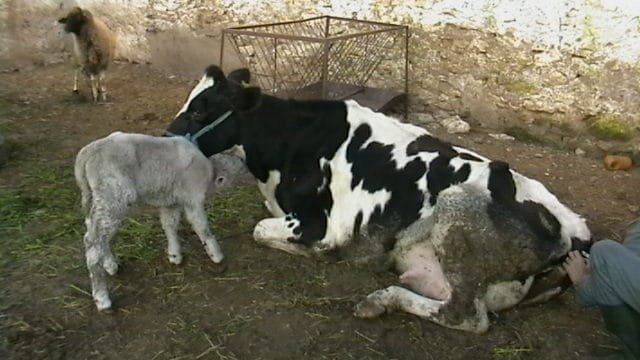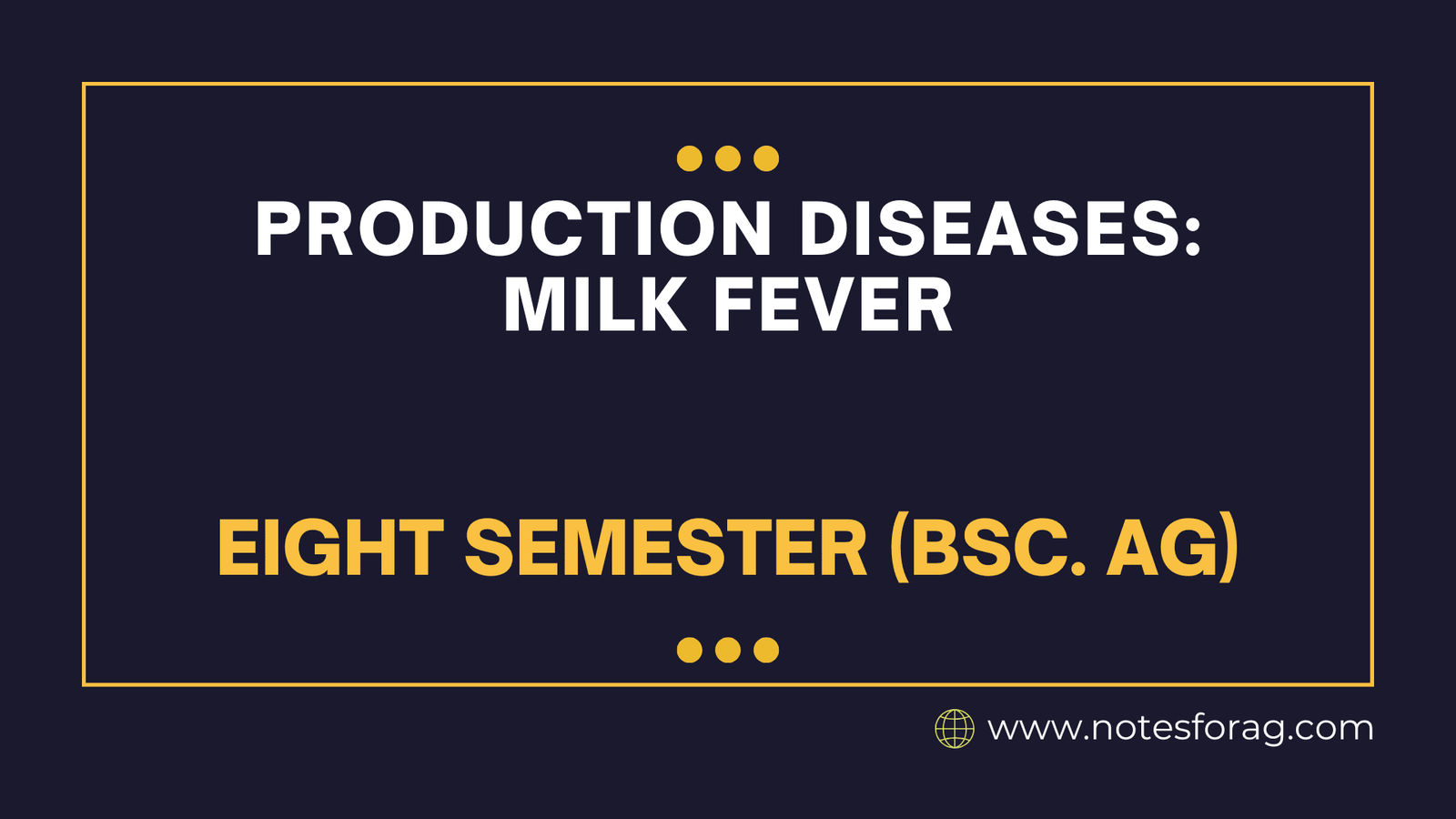Milk fever, also known as hypocalcemia, is a health problem that affects many dairy cows, especially around the time they give birth. It happens when the cow’s blood calcium levels drop too low, which makes it hard for her to move and function properly. This is more common in cows that produce a lot of milk, because they need more calcium to make milk, and sometimes their bodies can’t keep up with this demand. Let’s take a closer look at what causes hypocalcemia, how to spot it, how to prevent it, and how it can be treated.

Table of Contents
What Causes Milk Fever?
When a cow is about to give birth, her body needs extra calcium to produce milk. Normally, cows get calcium from their food, their bones, and other body processes. But after calving, when the cow starts making milk, the need for calcium increases quickly. If the cow can’t get enough calcium from her food or bones, her blood calcium level drops, leading to hypocalcemia.
Several factors can increase the chance of hypocalcemia:
High Milk Production: Cows that produce a lot of milk need more calcium. High-producing cows are at higher risk.
Age: Older cows are more likely to get hypocalcemia because their bodies may not be as good at handling calcium.
Low Calcium in the Diet: If the cow’s diet doesn’t have enough calcium before calving, she is more likely to get hypocalcemia.
Unbalanced Diet: A diet that is low in important minerals like phosphorus or magnesium can also affect how the cow uses calcium.
Sudden Diet Changes: Changing a cow’s diet too quickly can confuse her body and increase the risk of hypocalcemia.
Symptoms of Milk Fever
hypocalcemia usually happens within 24 hours after a cow gives birth, but it can also happen a few days later. The symptoms can vary, but the most common signs include:
Weakness and Trouble Standing: The cow may look weak, stumble, or have difficulty standing up because her muscles are too weak.
No Appetite: Cows with hypocalcemia often stop eating or drinking.
Lower Body Temperature: The cow may have a lower-than-normal body temperature.
Muscle Twitching: The cow might have shaking or twitching muscles, especially around the face and neck.
Laying Down: In severe cases, the cow may lie down and not be able to get up. This is called “downer cow syndrome” and needs immediate treatment.
Bloating: The cow may have swelling or bloating in her stomach.
Fast Heart Rate: The cow’s heart rate might increase as her body tries to compensate for low calcium levels.
If milk fever is not treated, it can lead to serious problems, like coma or even death. This is why it’s important to spot and treat it early.
Preventing Milk Fever
Preventing milk fever is much easier and cheaper than treating it. Here are a few ways farmers can reduce the risk:
Pre-Calving Diet
Feeding cows a good diet that includes enough calcium, magnesium, and phosphorus in the weeks before calving helps prepare their bodies for the extra calcium needed for milk.
Lower-Calcium Diet Before Calving
Some studies suggest feeding cows a slightly lower-calcium diet right before calving. This helps the cow’s body get ready to pull calcium from her bones when she starts making milk.
Vitamin D Supplements
Vitamin D helps cows absorb calcium. Giving cows vitamin D before calving can help improve calcium absorption.
Minimize Stress
Stress can make cows more likely to get sick. Providing a calm, clean, and comfortable environment around calving can reduce the chances of milk fever.
Monitor Older Cows
Older cows are more likely to get milk fever, so farmers should pay extra attention to them before and after calving.
Treating Milk Fever
If a cow does develop milk fever, it’s important to treat it quickly. The main treatment is to give the cow calcium. This is usually done with a calcium injection, which can be given through a vein or under the skin. The calcium injection works fast and helps raise the cow’s blood calcium levels.
In mild cases, cows can also be given oral calcium supplements, especially if they are still standing and able to swallow. Along with calcium, the cow may need fluids to stay hydrated and regain her strength.
Once treated, most cows will start to feel better within a few hours. They should be able to stand, walk, and eat again. However, it’s important to keep an eye on the cow to make sure her calcium levels stay normal.
Conclusion
Milk fever is a serious disease that can affect dairy cows, and if not treated, it can even be deadly. But with good management practices, it can often be prevented. Feeding cows the right diet before calving, reducing stress, and monitoring older cows closely can help prevent milk fever. If a cow does get sick, early detection and quick treatment with calcium can help her recover. Keeping milk fever under control is important for the health and productivity of dairy cows.
Frequently Asked Questions (FAQ)
Can I prevent milk fever through vaccinations or other supplements?
While there is no vaccine for milk fever, vitamin D supplementation before calving can help improve calcium absorption. The main prevention strategy is to manage the cow’s diet and mineral intake carefully, particularly in the weeks leading up to calving.
What happens if a cow gets milk fever more than once?
If a cow has milk fever once, she is more likely to develop it again in the future, especially if the underlying causes (like poor diet or age) are not addressed. Additional preventive measures may be needed, such as adjusting her diet, providing better mineral balance, or monitoring her more closely around calving time.
Related Articles

